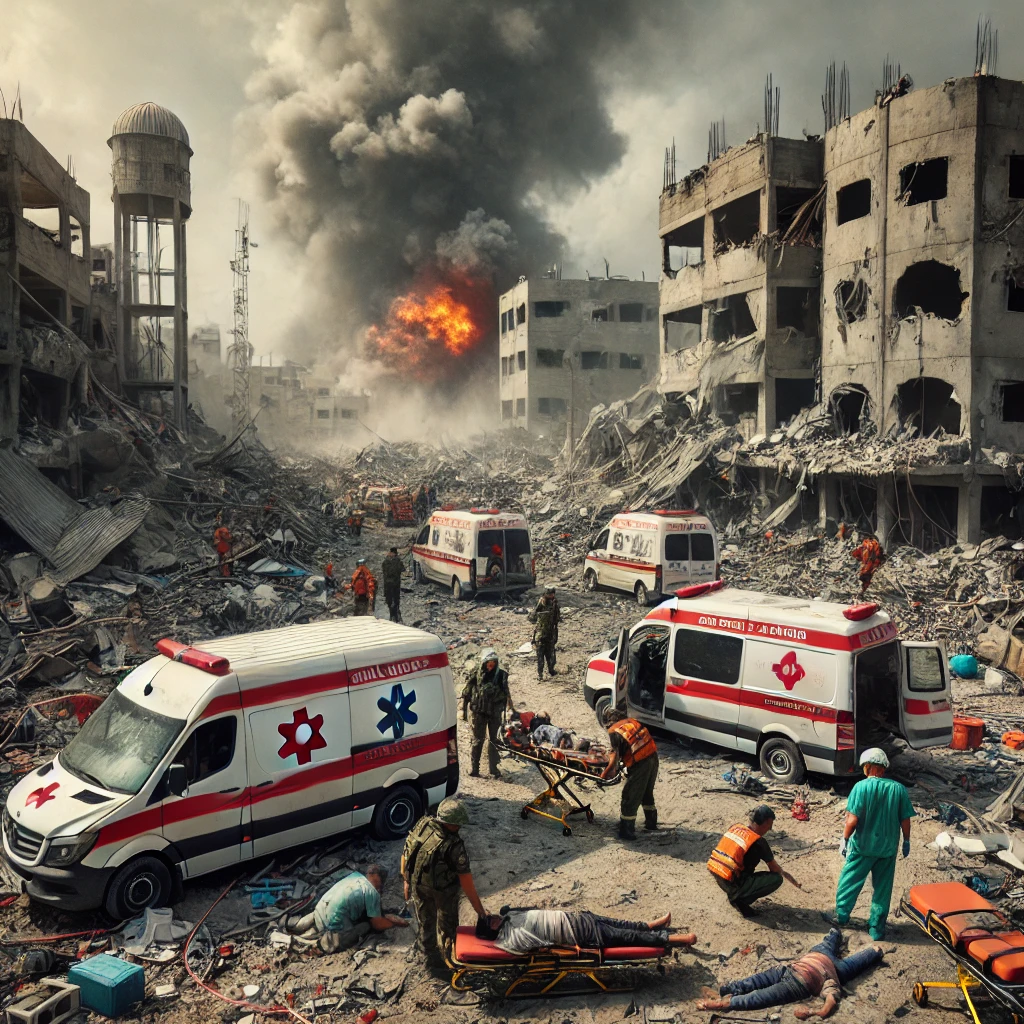
According to Palestinian health officials, at least 17 people were killed by Israeli fire near Al-Falouja in Jabalia, the largest of Gaza’s eight historic refugee camps. Meanwhile, 10 more were killed in Bani Suhaila, located in eastern Khan Younis in the southern part of the Gaza Strip, when an Israeli missile struck a residential house.
Earlier in the day, Israeli airstrikes targeted three houses in the Sabra suburb of Gaza City. Local civil emergency services reported that they had recovered two bodies from the debris, while rescue operations continued for 12 other individuals who were believed to have been inside the houses at the time of the airstrike.
In another incident, eight people were killed when a house was hit by an airstrike in the Nuseirat camp, which is located in central Gaza.
Later on Tuesday, the Gaza Health Ministry confirmed that a doctor was killed while trying to assist people who were wounded by Israeli strikes in Al-Falouja, Jabalia. The Ministry also reported that several medics were injured when their ambulance was hit by Israeli fire in both the northern and southern parts of the Gaza Strip.
Jabalia has been a central focus of the Israeli offensive for over 10 days, with Israeli troops returning to areas in the north that had already faced heavy bombardment earlier in the conflict, which has now spanned over a year.
This ongoing military operation has heightened fears among Palestinians and various United Nations agencies that Israel may be attempting to forcibly clear the population from northern Gaza, a claim that Israeli officials have denied. Residents, however, reported that Israeli forces have destroyed dozens of homes over the past 10 days.
The UN Office for Human Rights raised concerns on Tuesday, stating that it appeared the Israeli military was “cutting off North Gaza completely from the rest of the Gaza Strip.”
The Israeli military has surrounded the Jabalia camp and advanced into nearby towns of Beit Lahiya and Beit Hanoun, claiming that their objective is to root out Hamas fighters attempting to regroup in those areas.
The Israeli military has issued warnings to residents, advising them to evacuate their homes and move to safer areas in southern Gaza. However, both Palestinian officials and UN representatives have noted that there is no truly safe place within Gaza, as the entire territory has been subjected to heavy bombardment.
The Gaza Health Ministry has also reported that the Israeli military has ordered the evacuation of the three hospitals that are still functioning in the region. Despite the overwhelming number of casualties and the deteriorating conditions, hospital staff have vowed to continue providing care to those in need, even as resources are stretched thin.
UN Secretary-General Antonio Guterres spoke out on Monday, condemning the rising civilian death toll in northern Gaza. He called for an immediate cessation of hostilities and emphasized the need for all parties to protect civilians and adhere to international humanitarian law.
Northern Gaza is home to over half of the enclave’s total population, which numbers approximately 2.3 million people. During the initial phase of Israel’s assault on Gaza, hundreds of thousands of residents were forced to flee their homes amid relentless bombing.
Despite the mass exodus, the United Nations estimates that around 400,000 people still remain in the northern part of the territory. These individuals are facing dire conditions, with many unable to access food, water, or medical care, as the region continues to experience daily airstrikes and artillery fire.
The Israeli military has justified its actions by stating that its primary goal is to neutralize Hamas fighters and prevent them from launching attacks on Israel. The ongoing conflict has caused significant devastation to the civilian infrastructure in Gaza, with entire neighborhoods reduced to rubble. The humanitarian situation in the enclave has worsened dramatically, with reports of widespread shortages of essential supplies and medical equipment.
As the fighting continues, international pressure on both Israel and Hamas has intensified, with calls for a ceasefire growing louder. Humanitarian organizations, including the United Nations and various NGOs, have urged both sides to de-escalate the situation and prioritize the protection of civilians.
The Israeli government, however, remains steadfast in its military campaign, arguing that Hamas poses a direct threat to its national security. Israeli officials have also accused Hamas of using civilian areas as cover for its operations, further complicating efforts to minimize civilian casualties.
On the ground, the situation remains volatile, with no immediate end in sight to the hostilities. Both sides have suffered significant losses, and the humanitarian toll continues to rise. The international community is closely monitoring the developments, but so far, diplomatic efforts to broker a ceasefire have not been successful.
The destruction caused by the Israeli airstrikes, combined with the ongoing ground offensive, has left large parts of Gaza in ruins. The future of the territory, as well as the prospects for peace between Israel and the Palestinians, remains uncertain as the conflict grinds on with no clear resolution in sight.
